AI-Driven Smart Homes: Revolutionizing Living Spaces
Jan 15, 2025Explore how AI is transforming smart homes, offering unprecedented automation, convenience, and efficiency. Learn about core AI technologies, practical applications, and future impacts.
The convergence of artificial intelligence (AI) and smart home technology is rapidly transforming how we interact with our living spaces. AI-driven smart homes are no longer a futuristic concept but a present-day reality, offering unprecedented levels of automation, convenience, and efficiency. This article explores the multifaceted ways AI is revolutionizing our homes, delving into its core technologies, practical applications, and potential future impacts.
Understanding the Foundation of AI in Smart Homes
To grasp the true potential of AI-driven smart homes, it's essential to understand the underlying principles of AI and its integration into home systems. At its core, AI involves creating machines capable of learning and mimicking human intelligence. Within the smart home context, this translates to systems that analyze data, learn user habits, and make intelligent decisions to optimize the living environment.
Key AI Concepts
Artificial intelligence is a broad field with two significant sub-disciplines: machine learning (ML) and deep learning (DL). Both ML and DL leverage artificial neural networks, structures inspired by the human brain's decision-making processes. These neural networks learn from vast datasets using methods like supervised learning (where labeled data is used for training), unsupervised learning (where unlabeled data is analyzed for patterns), and reinforcement learning (where trial-and-error guides learning). These learning approaches enable AI-driven smart homes to adapt to user preferences and improve over time.
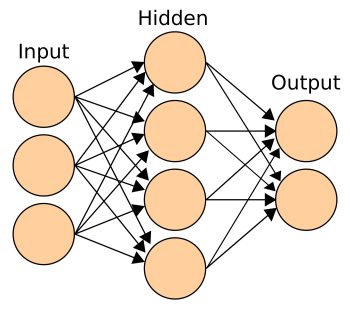 Credit: viso.ai
Credit: viso.ai
The Role of IoT in AI Smart Homes
The Internet of Things (IoT) serves as the backbone for AI-driven smart homes, connecting devices such as sensors, cameras, and appliances. These devices continuously collect data—temperature, energy consumption, motion detection, voice commands, and more—which is then processed by AI to make decisions and automate tasks. This data-driven approach is central to the functionality of a smart home, enabling it to respond to user needs and environmental changes proactively.
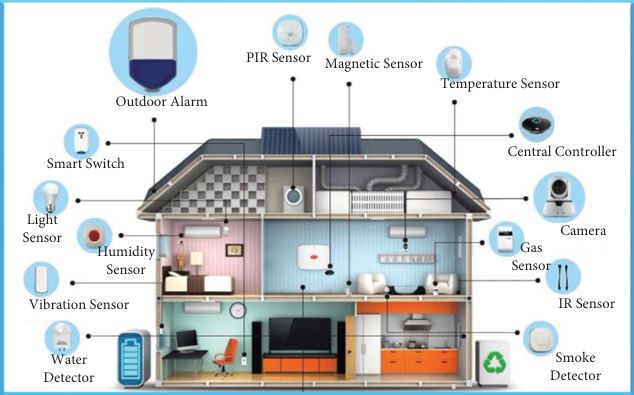 Credit: viso.ai
Credit: viso.ai
Core AI Technologies Powering Smart Homes
Several key AI technologies are instrumental in creating intelligent and responsive home environments. These technologies work in concert to deliver a seamless and personalized user experience.
Computer Vision (CV)
Computer vision empowers smart devices, like cameras and motion sensors, to "see" and interpret their surroundings. Through machine learning algorithms, CV analyzes images and videos for object detection, recognition, and segmentation. This has many applications, such as identifying intruders, detecting falls, monitoring activity, and even tracking food items in the refrigerator. Technologies like Convolutional Neural Networks (CNNs) and Recurrent Neural Networks (RNNs) are used to process image and video data in real time, enhancing the capabilities of AI-driven smart homes.
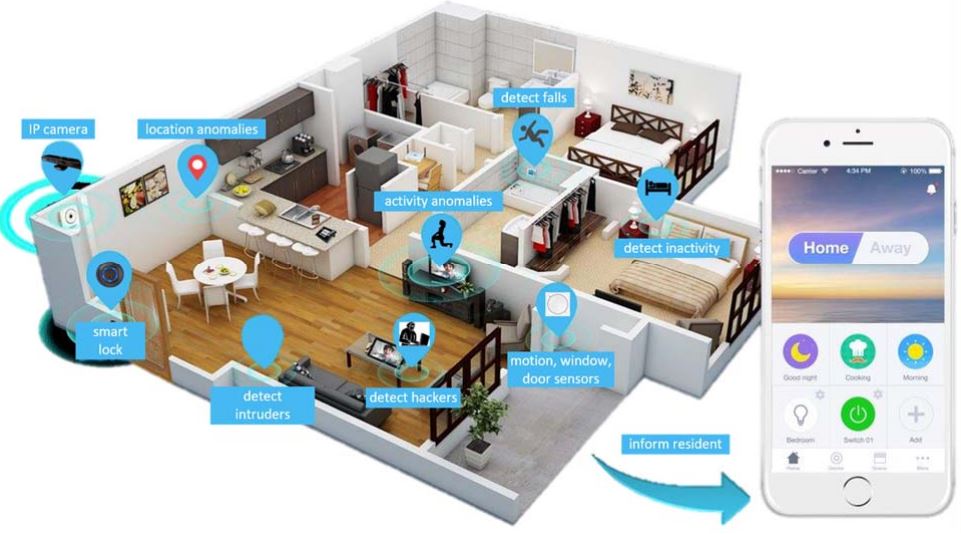 Credit: viso.ai
Credit: viso.ai
Natural Language Processing (NLP)
Natural Language Processing (NLP) enables computers to understand, interpret, and generate human language, both text and speech. This technology is crucial for voice assistants like Alexa, Google Assistant, and Siri, which are integral parts of many AI-driven smart homes. Large Language Models (LLMs) are increasingly used to handle complex interactions, not just responding to simple commands but also taking actions based on context and user needs. This transforms voice assistants from transactional tools to collaborative partners in managing daily life within the home.
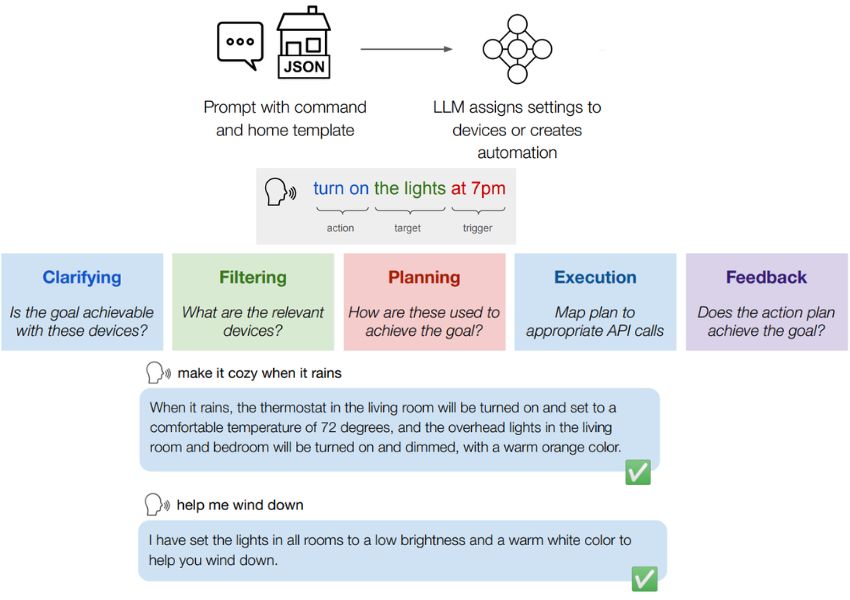 Credit: viso.ai
Credit: viso.ai
Reinforcement Learning (RL)
Reinforcement learning is a powerful AI approach that allows systems to learn through trial and error. In smart homes, RL is used to optimize energy management, personalized home environments, predictive maintenance, and security. By analyzing user behavior and environmental data, RL-based systems can make adjustments to lighting, temperature, and appliance usage, creating a more efficient and comfortable home. This approach is particularly valuable for Home Energy Management Systems (HEMS), which optimize energy consumption based on learned patterns.
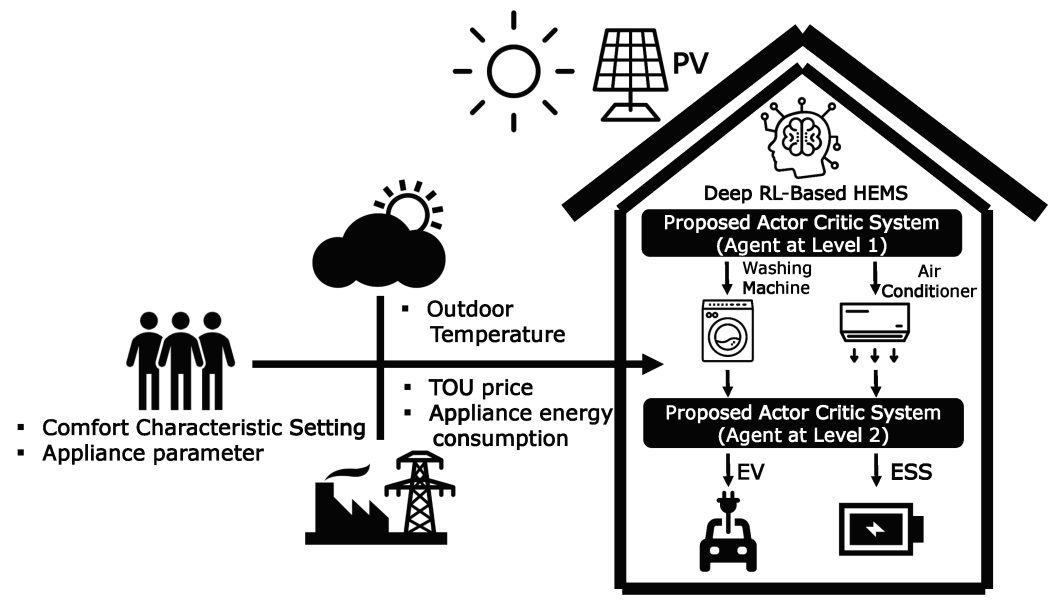 Credit: viso.ai
Credit: viso.ai
Practical Applications of AI in Smart Homes
The integration of these core AI technologies leads to a wide array of practical applications that enhance the living experience. AI-driven smart homes are not just about automation; they're about creating personalized and responsive environments.
Enhanced Home Automation
AI-driven smart homes offer more than just basic automation. They can learn user preferences and automatically adjust settings based on time of day, activity, and even individual needs. For example, a smart home could adjust lighting and temperature based on a user's daily routine, or a security system could activate automatically when the last person leaves the house. This level of intelligent automation saves time and effort, allowing users to focus on other tasks.
Personalized Environments
By learning user preferences, AI enables the creation of highly personalized home environments. From automatically adjusting lighting and temperature to playing preferred music or content, AI-driven smart homes can adapt to the individual needs of each user. This level of personalization makes living spaces more comfortable and enjoyable.
Smart Security Systems
AI significantly enhances home security systems through advanced features like facial recognition and motion analysis. Smart cameras can distinguish between ordinary movement and potential threats, reducing false alarms. AI-powered systems can also send real-time alerts to homeowners, allowing them to monitor their property remotely and take action if necessary.
Energy Management and Efficiency
AI plays a crucial role in optimizing energy consumption in smart homes. AI-driven thermostats learn user habits and environmental conditions to adjust heating and cooling schedules, maximizing efficiency and reducing energy costs. Smart lighting systems can also adapt to user needs and time of day, optimizing brightness and minimizing energy waste.
Predictive Maintenance
AI-driven smart homes can also anticipate maintenance needs, preventing costly repairs and replacements. By analyzing sensor data, AI agents can predict when a device or appliance is due for maintenance, allowing homeowners to schedule repairs proactively. This reduces the risk of unexpected breakdowns and ensures that home systems operate efficiently.
The Future of AI-Driven Smart Homes
The future of AI-driven smart homes is filled with exciting possibilities. As AI technology continues to advance, we can expect even more sophisticated and personalized home experiences.
The Smart Home as a Smart Assistant
In the future, smart homes will act as proactive assistants, anticipating user needs and adapting to their preferences automatically. Wearable devices could collect biometric data and use it to make meal recommendations, manage home access, adjust the environment, and even generate automated grocery lists. These centralized processing systems, often built into devices like smart TVs, will be able to manage all aspects of the home environment.
AI-Powered Entertainment and Education
AI will also play a larger role in home entertainment and education. Smart TVs will use AI for picture quality enhancements, content recommendations, and even interactive fitness and gaming applications. AI-powered assistants could also help children with their homework or manage household tasks using on-device Large Language Models.
Overcoming Challenges: Privacy and Ethics
While the potential benefits of AI-driven smart homes are immense, there are also challenges that must be addressed. Data privacy and security are major concerns, as smart home devices collect vast amounts of personal data. It's crucial to develop systems that protect personal information and ensure that AI is used ethically and responsibly. Transparency is key, with users needing to understand how their data is being used and stored.
Open-Source Tools and Platforms
For developers looking to create AI-driven smart homes, several open-source libraries and frameworks are available. These tools offer a flexible and customizable approach to smart home automation.
openHAB
openHAB is an open-source home automation software coded in Java. It allows users to fully customize their smart devices and create automations through a user interface. It also supports multiple plugins, providing extensive functionality.
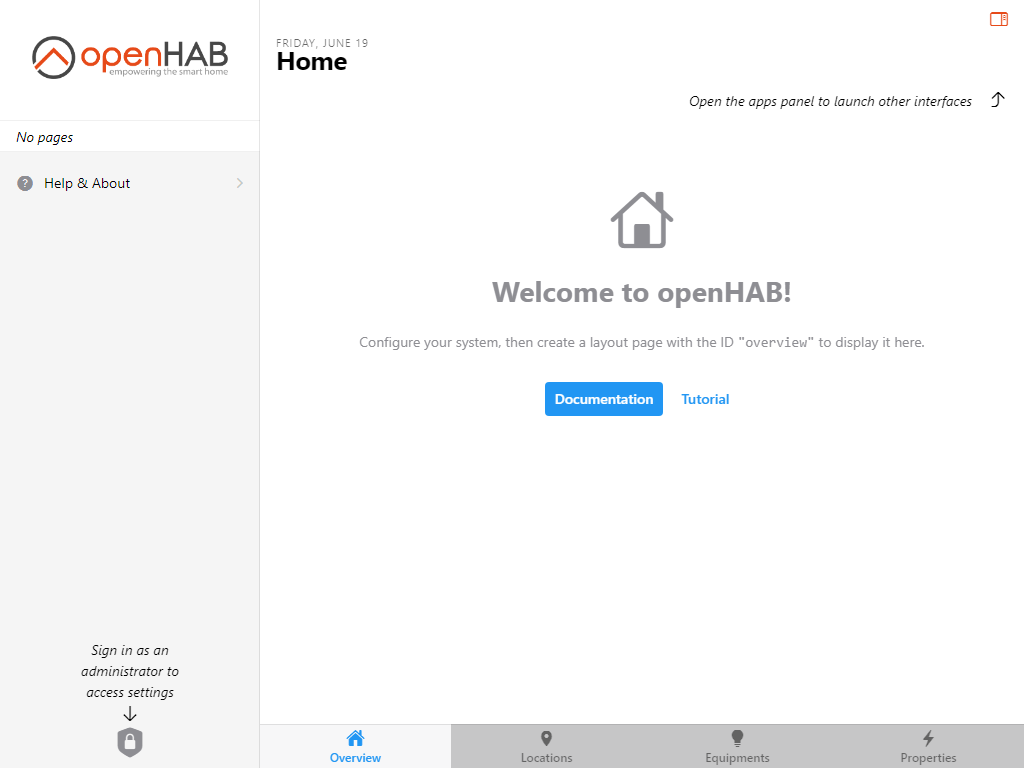 Credit: viso.ai
Credit: viso.ai
Home Assistant
Home Assistant is another open-source and free software that serves as a smart home hub. It allows users to control all their smart devices in one place, focusing on privacy and local control. This platform is independent of any specific IoT ecosystem.
Node-RED
Node-RED is a low-code development tool designed for connecting hardware devices, APIs, and online services. Its flow-based interface allows developers to create JavaScript functions and build complex automation workflows.
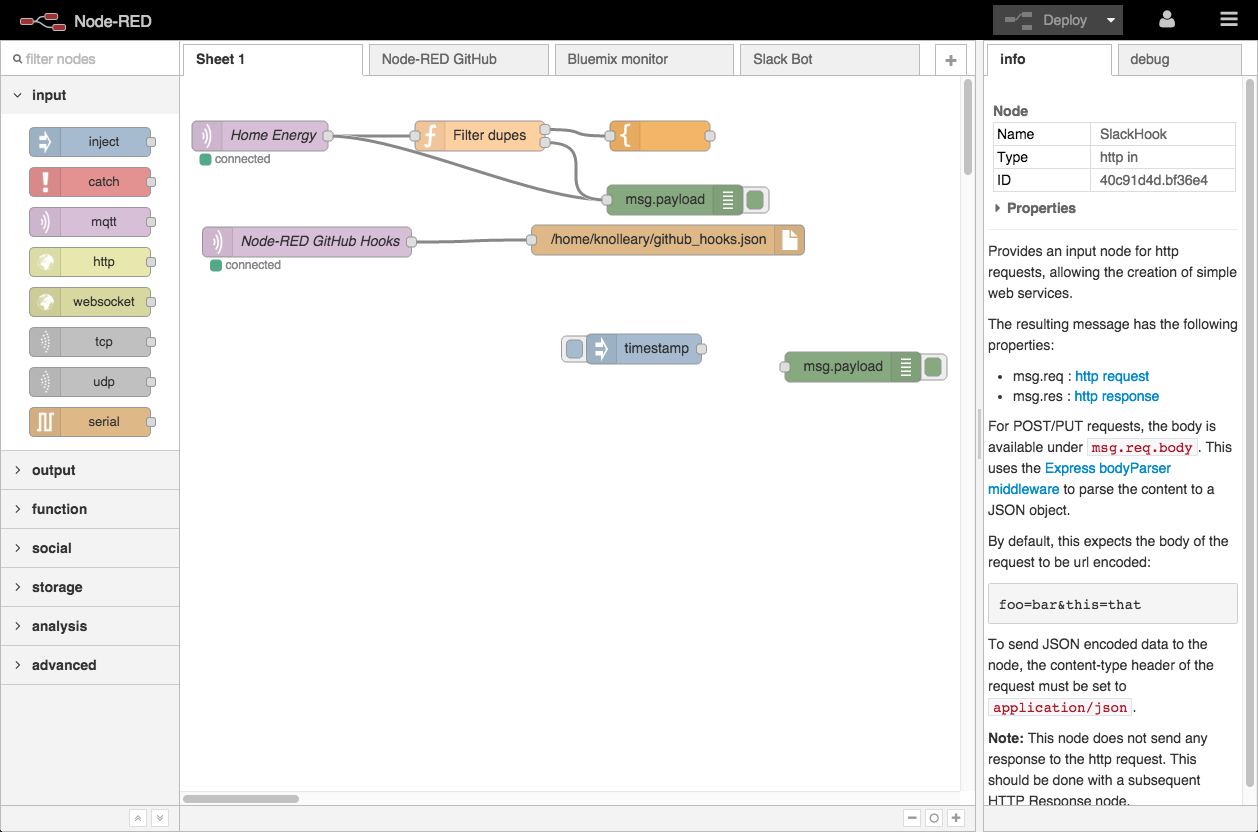 Credit: viso.ai
Credit: viso.ai
Conclusion
AI-driven smart homes are revolutionizing the way we live, offering unprecedented levels of automation, convenience, and personalization. By combining AI technologies like computer vision, natural language processing, and reinforcement learning, smart homes are becoming more responsive, efficient, and comfortable. As the technology continues to evolve, we can expect even more innovative and transformative experiences. While challenges related to privacy and security must be addressed, the potential benefits of AI in the smart home are undeniable. The future of living spaces is intelligent, adaptive, and shaped by AI.
Common Smart Home Mistakes and How to Fix Them
Published Feb 19, 2025
Avoid common smart home pitfalls by understanding and fixing these mistakes. Learn how to optimize your smart home for convenience, security, and efficiency....
Ensuring Smart Plug Safety for Winter Devices: A Comprehensive Guide
Published Feb 18, 2025
Ensure smart plug safety for winter devices with our comprehensive guide. Learn how to prevent accidents, save energy, and enjoy a secure home throughout the season....
Supercharge Your Smart Home: 5 Must-Try Google Gemini Tips and Tricks
Published Feb 18, 2025
Unlock the full potential of your smart home with Google Gemini! Discover 5 must-try tips and tricks for effortless control, natural language commands, and AI-powered automation....